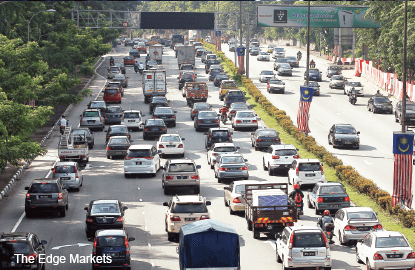
This article first appeared in The Edge Financial Daily, on April 7, 2016.

Maintain underweight: We maintain our “underweight” rating on the automotive sector given the outweighing of “underperform” ratings in the total market capitalisation of our stock coverage coupled with the lack of rerating catalyst for 2016.
According to the latest data from the Malaysian Automotive Association, February’s total industry volume (TIV) took a nosedive to a seven-year low of 37,876 units (a decrease of 15% month-on-month or m-o-m and a decrease of 25% year-on-year or y-o-y).
While seasonal weakness (long holidays in February) was a contributing factor, we believe cautious consumer sentiment played a bigger role in the pallid sales, with spending turning more cautious on big-ticket discretionary items amid rising cost of living, echoed by the apparent slowing demand trend of passenger-car loans as highlighted in the Bank Negara Malaysia monthly statistics.
Additionally, tighter lending guidelines also exacerbated the situation.
In terms of outlook, while we believe weak consumer demand should continue to underpin the coming months’ TIV (at least until June) as consumers continue to adjust to the rising cost of living and higher car prices, it may not be all gloom and doom for 2016 as we expect several new attractive models to be launched in the second half of 2016 (2H16) to excite the market.
We keep our 2016 TIV forecast of 650,000 (a decrease of 2.5%) unchanged for now in anticipation of a stronger 2H16 TIV to make up for the shortfall.
In our automotive coverage, we continue to favour Berjaya Auto Bhd (BJAuto) (outperform, target price [TP]: RM2.41) as our preferred stock, we view it as a rose among thorns given its target customer base in the middle- to high-income bracket, that are less sensitive to the rising cost of living.
In terms of valuation, it is still trading at an undemanding valuation of 11.1 times financial year 2017 estimated (FY17E) price-earnings ratio (PER), against the industry average forward PER of 14.8 times, a steep discount of 25%.
For the quarter, only two out of five stocks under our coverage, namely MBM Resources Bhd and Tan Chong Motor Holdings Bhd (TChong), reported results, which was within our expectations.
On the underperformers, UMW Holdings Bhd and DRB-Hicom Bhd made losses in the quarter dragged by the cut-throat margins in their respective automotive segment; with the former exacerbated by wider-than-expected oil and gas segment’s losses.
Meanwhile, BJAuto’s dismal results were owed to unfavourable sales mix. Post results, while we maintained all ratings for our stock coverage, we trimmed the TPs for BJAuto to RM2.41 from RM2.63, DRB-Hicom (underperform) to 80 sen from RM1.06, MBM (market perform) to RM2.30 from RM2.98 and UMW (underperform) to RM4.89 from RM6.73 following our downward earnings revisions. TCHONG (underperform, TP: RM2.15) was the only stock with TP unchanged.
Meanwhile on the passenger-vehicle segment, an overall m-o-m decline was seen with the biggest underperformers on percentile terms in Mazda (a decrease of 42%), followed by Proton (a decrease of 23%) and Honda (a decrease of 23%) among all the major marques.
Though we are cognisant of the Mazda’s sharp sales drop, we are not overly perturbed by this as we see it as a normalisation from the high base.
Recall that the strong Mazda’s sales in January were boosted partly by its new B-segment SUV CX-3, in addition of the ongoing demand for its flagship Mazda2 and Mazda3.
On a y-o-y perspective, while softer sales were seen across all passenger marques, Toyota recorded the largest depressed TIV (a decrease of 40%) owing to the lack of launch of attractive models.
We believe weak consumer demand will continue to underpin the coming months’ TIV (at least until June) with consumers taking time to adjust to the rising cost of living and higher car prices (particularly from Toyota, Honda and Nissan, starting from January to buffer against higher import costs of components and completely built-up units).
This will result in, to some degree, margin compression as automotive players have to ramp up their promotional efforts amid the fierce competition in the now highly saturated automotive market. — Kenanga Investment Bank Bhd, April 6